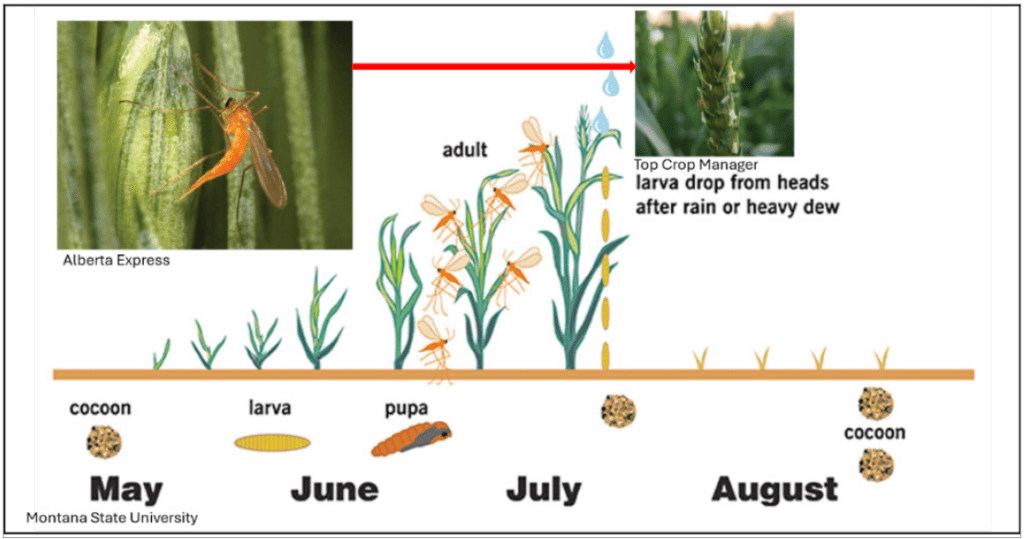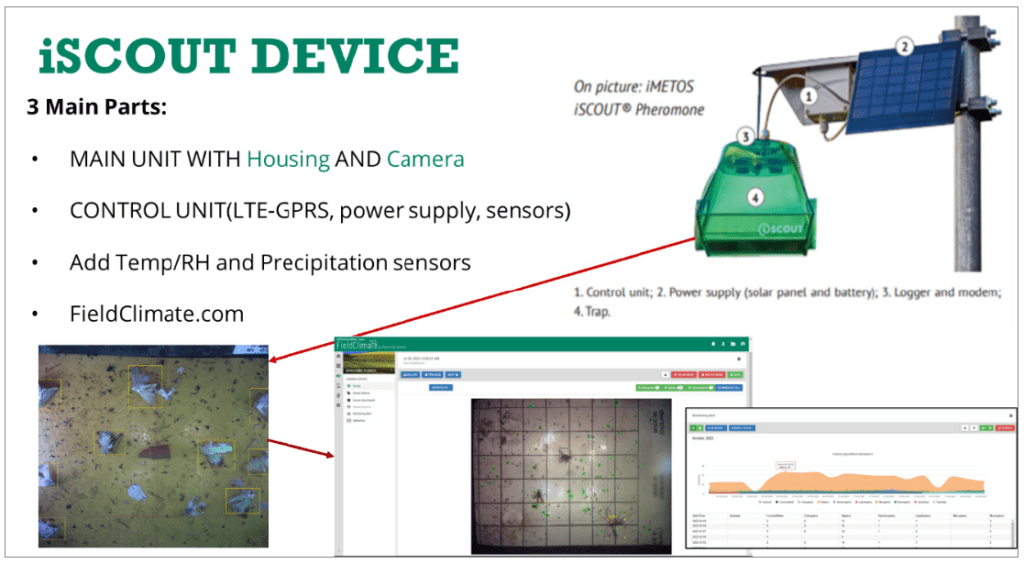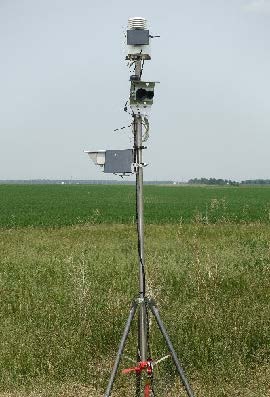USE CASE: iSCOUT® - Your Eye on real-time Wheat Midge Numbers
In-Field Insect Identification
The key for any crop insect is monitoring. There are several ways this can be accomplished, but in this case study, we look at the use of automated insect traps, called iSCOUT® and IoT devices to measure environmental conditions.

BACKGROUND
Wheat midge (Sitodiplosis mosellana) is an agricultural pest found in most areas around the world where wheat crops are grown. Until the recent development of wheat varieties resistant to wheat midge, all wheat classes and varieties were susceptible to damage, with some varieties being more seriously affected than others.
Wheat midge is an important crop pest to monitor, as infestations of the insect can reduce crop yields and lower the grade of the harvested grain. In addition, should favorable weather conditions not exist in a particular year, the midge can remain dormant in the soil for several years before it reemerges. Then, they can quickly take advantage of good environmental conditions, and populations can reach epidemic proportions in a very short time period. All of the damage to a wheat crop is caused by the larval stage. Once the eggs hatch, the midge larvae feed on the developing wheat kernels, causing them to shrivel, crack, and become deformed.

As stated, midge damage affects both yield and grade. When there is at least one adult midge for every four or five wheat heads, wheat yields can be reduced by approximately 15% if not controlled. Higher midge densities will reduce yields even further. Grade is also impacted by the shriveled or damaged heads, leading to further economic losses.
The key for any crop insect is monitoring. There are several ways this can be accomplished, but in this case study, we look at the use of automated insect traps, called iSCOUT® and IoT devices to measure environmental conditions (Figures 2 & 3).


FIELD TRIAL at EMILI
The Innovation Farms team tested an iSCOUT® automated insect trap with a pheromone, that took pictures of the wheat midge held to a sticky plate and used AI (artificial intelligence) to identify and count the wheat midge totals. In addition, a field-specific weather station was used to test a growing degree-day model for estimating the percentage of wheat midge that emerged.
These IoT monitoring devices and sensors helped EMILI determine exactly what field-specific conditions were for wheat midge emergence and development, which in turn reduced trips to the field and helped make timely management decisions. The growing degree day model used in this study is based on peer-reviewed research and specifically developed to track wheat midge stages of emergence. The spring wheat variety grown at this field location is AAC Hockley, which is not VB rated for wheat midge.

WHAT WAS LEARNED?
The collection of field-level weather data is critical. It is very important to have localized images and weather data for pest assessments. Insect populations can vary over a short distance, so it is necessary to have the appropriate number of insect traps at a field location. This was accomplished by having an automated iSCOUT® pheromone trap and using a series of manual sticky traps. The automated iSCOUT® trap worked as the sentinel, letting the farm manager know that wheat midge has now emerged and the population levels. This saves trips to the field. Once the midge has been identified, field scouting and sampling of the manual traps begin.
So what are the results?
Read them in the new brochure below.
Want to learn more?
Download the In-Field Insect Identification brochure.

